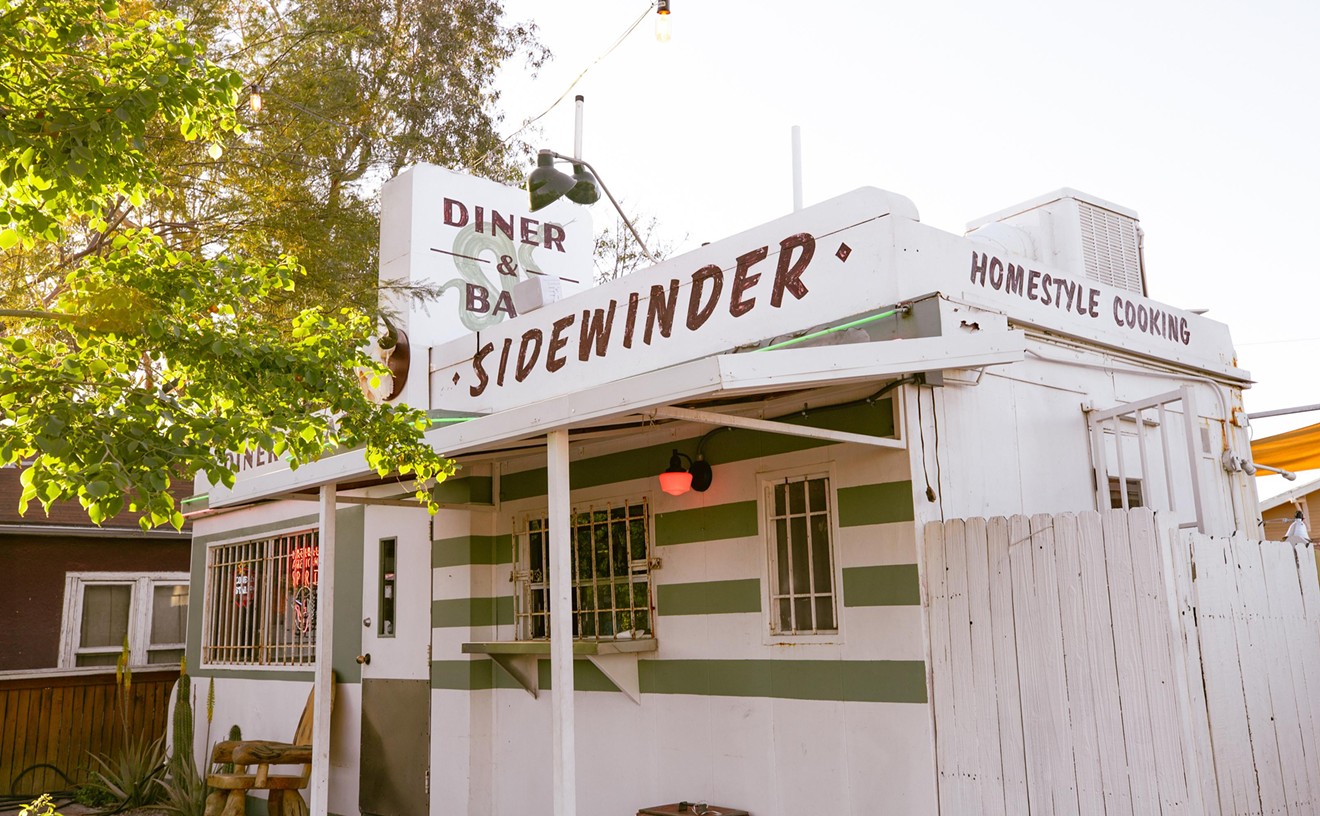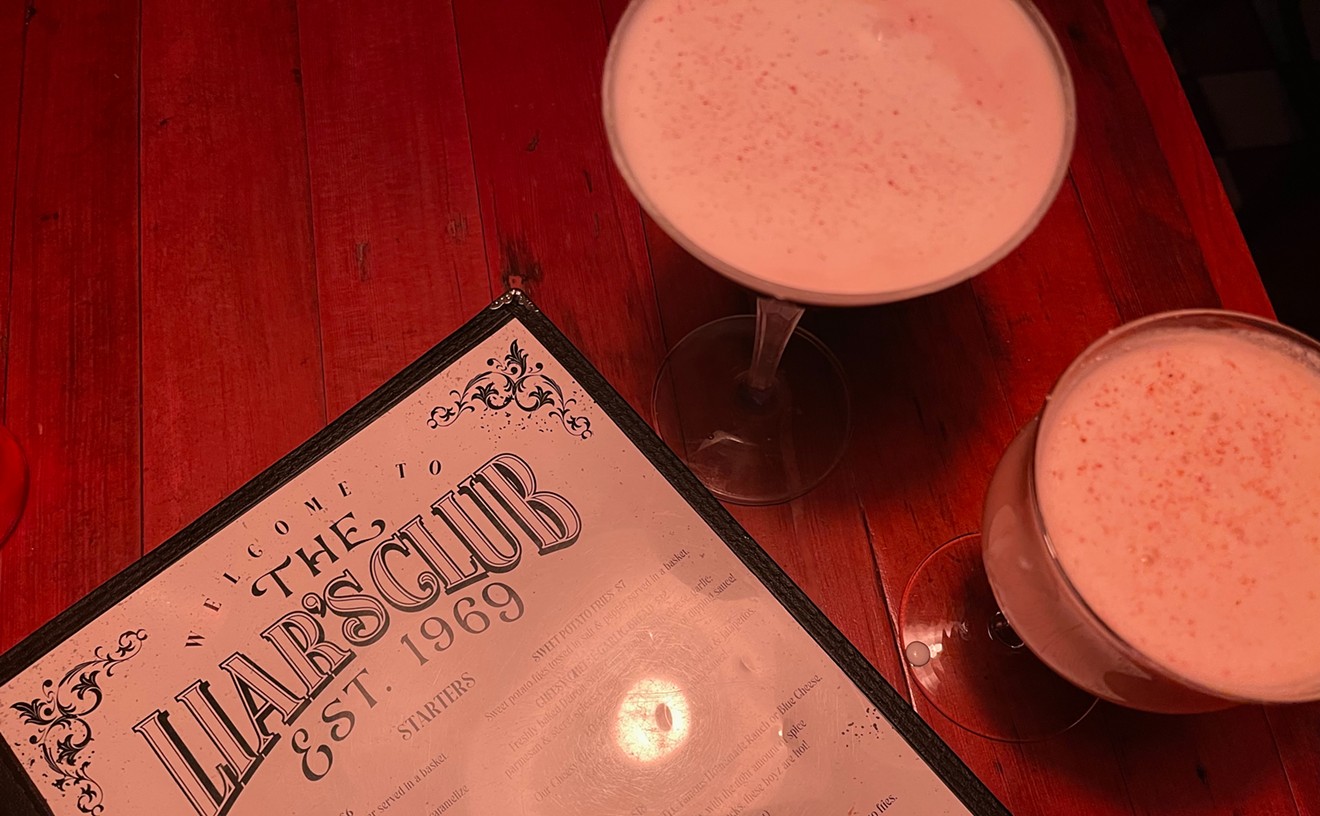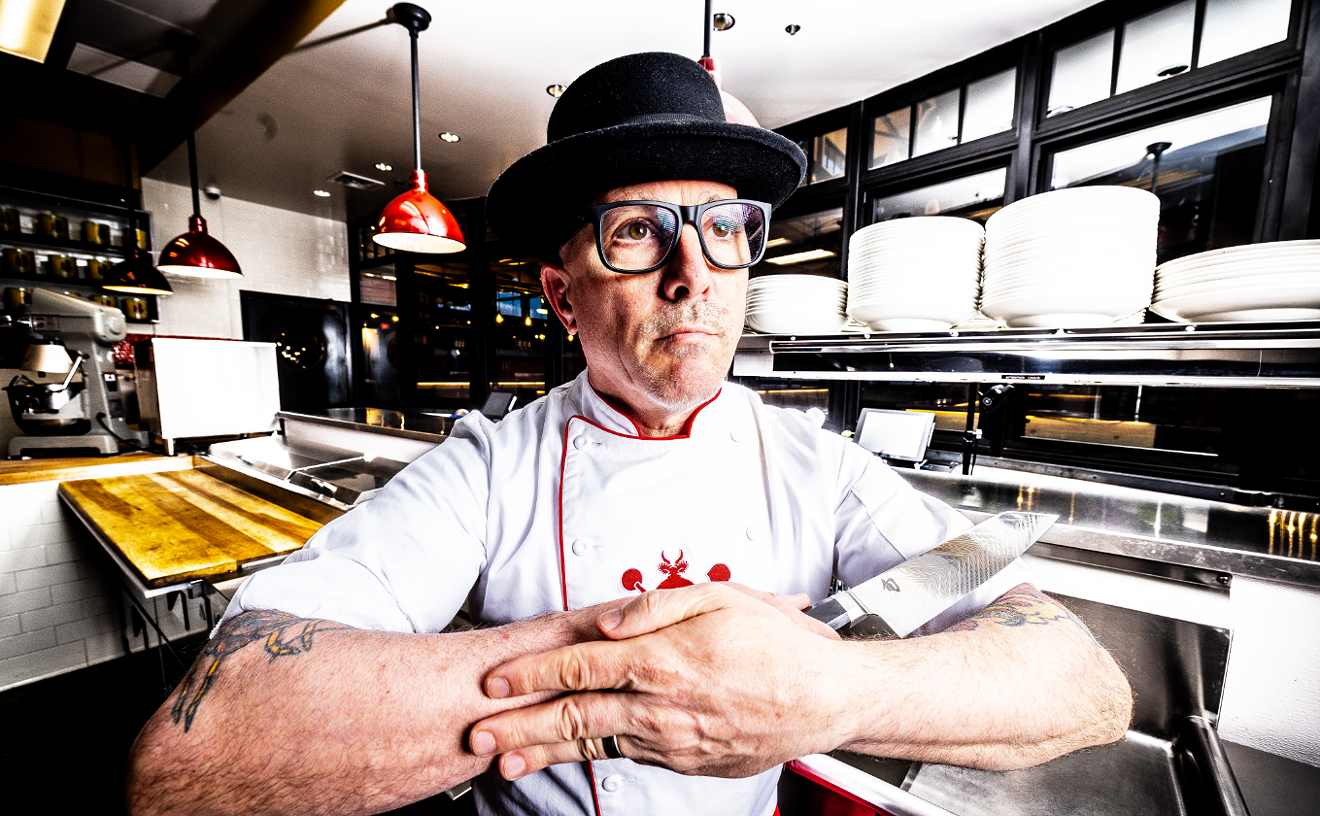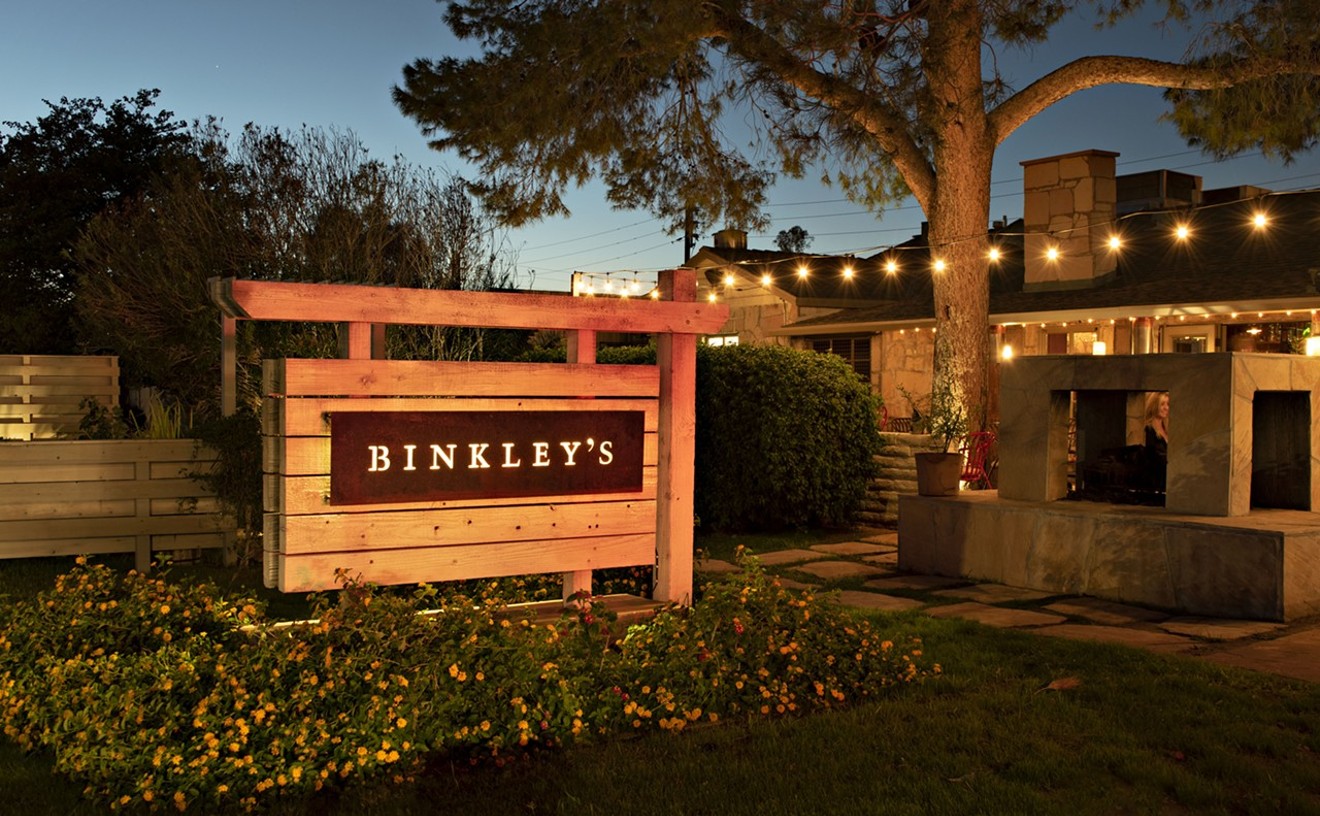If your answer is Tom's Tavern, you are correct.
The original Tom's Tavern, squeezed between a pipe shop and a jewelry store, was not particularly fashionable at 136 West Adams. It had previously served as the downtown Phoenix morgue, which was converted into a hamburger haven by Tom Higley.
Yes, there once was a Tom of Tom's Tavern.
Higley was a descendant of the founder of the town of Higley. In Higley's day, the food at his restaurant was good, and the price was right, according to longtime employee Leroy James.
"I did everything at Tom's -- worked tables, hustled pool, and gambled in the back. I even took a few bets on occasion. The place was jumping from morning 'til closing time."
Fuse boxes and antique thermometers hung on bare walls, like prized paintings on exhibit. Oscillating fans produced cool blasts of air. The place was known for its mahogany back bar, built in 1850, with inlaid coral, jade, ivory and marble. The bar, which was Tom's pride and joy, had previously graced the long-gone Ford Hotel.
"This was where the sandwiches, baked beans, burgers, chili and spaghetti red got served," says James, who worked at Tom's from 1943 to 1977.
The main attraction was not the food, but a small door leading into a darkened, smoke-filled room, smelling of bourbon, pool cue chalk and stale cigarettes. Local politicians, judges, attorneys and townsfolk could rack 'em up at the eight pool tables there. According to James, "More cases were decided at Tom's than in the courthouse."
An enormous bison head was mounted on the back wall, along with stuffed buzzards and mangy buffalo heads. A door from the parking lot led into a gamblers' den where local townsfolk could be seen shooting craps, playing games of Life and Knock Rummy or placing their bets with bookies. A smaller room, the inner sanctum, contained three snooker tables, and patrons carried their pool sticks neatly hidden in narrow cases. Some of the heaviest bookmaking operations and simulated horse racing announcements took place in an adjacent parking garage.
Higley later sold his hash house and well-hustled pool hall to Joe Logees. Back then, the luncheon special -- a bowl of chili and a bottle of milk -- was 30 cents. The food prices were frozen at that time, but Logees wasn't getting rich serving lunch; it was the activity in the back rooms that brought in the revenue.
At the end of World War II, he turned down an offer of $150,000 for his business. Logees was finally persuaded to sell the place in 1965 to Harry Myers.
According to Howard Showers, who worked behind the counter starting in 1966, Myers' short stint as owner ended with a gunshot wound to the head while cleaning his gun at the far end of the mahogany bar. The marbled bar would be dented and bloodstained forever.
In 1969, Russ Atkinson, previously with United Produce, bought Tom's potent past, as well as its name, nostalgia and aging bricks that gave the place its personality. Showers says he can still hear the shouted orders for "hocks-bowl of chili-gimme half 'n' half."
The chili and hamburgers were still selling, but the food industry was rapidly changing. Urban sprawl was all around, commuting was popular and competition tripled during the last few years. Business wasn't all that was declining: The old morgue was decaying, the roof leaked, wallpaper was peeling and the building was ready to retire.
Tom's was all that was left of Old Whiskey Row. Atkinson decided to sell the place and auction off the memorabilia, which included pool cues, balls, tables and the famous marbled bar. According to Bill Ledbetter, owner of Ledbetters Auctions, "The bar was sold to a man in San Antonio. All the items were sold, some to Phoenix establishments and some to private parties."
The building was eventually torn down. Tom's Tavern, however, wasn't ready to die with it.
In 1988, Big 4 Restaurants unveiled the new Tom's Tavern at One Renaissance Square, about a block and a half from the original hangout. Once again, the grill sizzled with burgers and the nostalgia was quickly captured and preserved. This modern building, with black-and-white tile floors, green leather booths and mellow music, became the latest incarnation of Tom's. The original chili and spaghetti red signs are displayed over the cooking area. A menu listing chili, burgers, pasta, salads, stir fry and sandwiches keeps the tradition of Tom's intact.
Although Tom's is in a shimmering high-rise, its new owners remind customers that the restaurant's roots go back to the Depression.
There aren't any pool halls in the back room, but some original pool cues, balls and racks grace the walls, along with sports memorabilia and pictures of old downtown. The Wall of Fame is filled with photos of Tom's history. Framed and signed pictures of Margaret Mullen, past executive director of the Downtown Phoenix Partnership, Sheriff Joe Arpaio and Mayor Skip Rimsza with his triplets are neatly arranged on the wall. Patrons dine while gazing at pictures of the Orpheum Theatre, old and new. A clever, brightly colored scene embraces the east wall with life-size wooden pool players. Showers is one of the players.
Tom's Tavern has been operated by Michael Ratner and Allen Burton since 1992. Ratner works the front, while Burton runs the kitchen. Together, they are the heart and soul of Tom's.
"I hope to see the time when downtown Phoenix catches up with other cities, such as Denver, Houston and Chicago," he says.
A special governors' corner can be found in the front where you'll find a reserved sign on a table for four. President George W. Bush and his wife had lunch there with Governor Jane Hull during his campaign visit to Phoenix.
According to Ratner, former governor Fife Symington's photo once went missing. Later that week, he received a message in a brown envelope, written with crayon and letters cut from a magazine.
The note said: "We've got Fife. Don't call cops."
Ratner says the picture reappeared as mysteriously as it had disappeared.
In times past, Symington, former secretary of the Interior Bruce Babbitt and former attorney general Grant Woods huddled in the back room whispering about the Indian Gaming Compact. Milt Graham hustled pool at Tom's two decades before becoming mayor of Phoenix. Politician John Rhodes and former senator Paul Fannin spooned chili there, and former governor Jack Williams was a regular.
City council members talk politics, lawyers still meet with their clients, the Senate breaks for lunch and just about anything can happen.
"It's my home. I know so many people downtown. It's like my neighborhood," Ratner says.










